The educational materials listed on this page are about Manure Management.
Manure management is critical on any type and scale of farm. Many farms that do not have livestock use off-farm manure for fertility purposes, while farms with livestock are challenged by storing manure and applying it to land in a sustainable manner. Sometime applied to fields as raw manure, there are many other types and uses of manure, such as horse manure compost, cow manure compost, goat manure fertilizer, organic manure and compost manure. Compost implies the manure is not raw but has been static or turned for a period of time, and therefore has broken down. Proper manure composting, including careful temperature management, will usually eliminate pathogens. If all harmful pathogens have been removed then composting horse manure to generate rich horse manure for garden spaces may be a great benefit for organic matter. Likewise, cow manure fertilizer could be good for soil fertility when used properly. There is not one single compost that is the best manure for your farm or garden, but if you learn the practices of how to compost horse manure, you are well on your way to finding out. Key practices include manure management, grazing management, nutrient management, composting, soil quality/health, riverbank protection, water management, nutrient cycling.
The Small Ruminants Topic Room is a useful starting place if you manage small ruminants, like goats and sheep, and want to find resources for manure management of these animals. If you want to understand the role of water in a farm system and how manure management may affect your water, check out Smart Water Use on your Farm or Ranch. SARE’s book Building Soils for Better Crops can provide useful information on how to reduce manure and nutrient runoff in order to improve soil fertility.
Showing 1-10 of 15 results
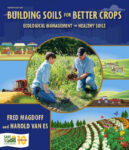
Building Soils for Better Crops
The fourth edition of Building Soils for Better Crops—enhanced and expanded—explains how to use ecological principles to build soil health and boost fertility, yields and overall sustainability.
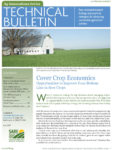
Cover Crop Economics
Cover crops can build soil health, control weeds, conserve moisture, provide grazing opportunities and more. But when do they start to pay for themselves? This analysis looks at the economics behind different management scenarios to determine if cover crops are likely to improve profitability in one, three or five years of use in corn and soybean rotations.
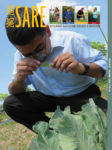
2015/2016 Report from the Field
Read about SARE-funded work in the areas of sustainable dairy cropping systems, soil health assessments, nutrient management, cover crops, beginning farmers, pollinators, technical assistance programs for women farmers, and more. This edition includes highlights of projects funded through the graduate student program, and the highly regarded Sustainable Agriculture Fellowship, a professional development program coordinated by SARE and NACAA.
Is Fish Waste Compost Worth the Mess and Effort?
A South Carolina farmer discusses the results of using fish waste compost in vegetable production.
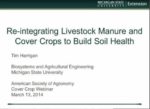
Combining Livestock, Manure and Cover Crops
A livestock and cover crop combination is the fastest way to profit from your investment.
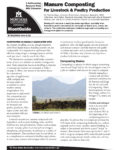
Manure Composting for Livestock and Poultry Production
This Montana State University publication addresses medium- to large-scale composting as a management option for animal producers in cold, semi-arid environments.
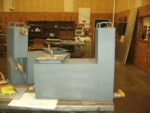
Small-Scale Biogas Technology
This website has information on technology for turning organic waste into biogas for small-scale, on-farm energy applications.
Developing Successful Organic Horticulture Farms: Practical Training for Ag Professionals
A series of Power Point presentations developed for ag professionals on the principles of organic farming, building soil quality, and managing weeds, pests and diseases.
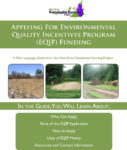
Applying for Environmental Quality Incentives Program (EQIP)
This plain language guide introduces readers to the USDA-NRCS Environmental Quality Incentives Program (EQIP), and explains eligibility for EQIP, how to apply and how the money can be used.
GIS Applications in Agriculture: Nutrient Management for Improved Energy Efficiency Volume II
Provides an outline of how management recommendations are developed and how a ground-based active sensor can be used. It contains 24 case studies (exercises) ranging from using historical techniques to overcome production barrier to calculating soil organic carbon maintenance requirements. A CD containing data sets is included with the book.